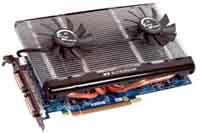 by Nick N » Sun Mar 11, 2007 7:34 pm
by Nick N » Sun Mar 11, 2007 7:34 pm
The MEMORY BUS will NEVER talk to the CPU at the same speed the CPU is able to chat, THEREFORE the best clock for a system is based on the speed of the FSB/Memory in relation to the CPU.
For AMD64, the architecture of the memory controller is different from that of Conroe. With AMD, it is usually best for a high clock to run a divider ratio and run the FSB up as high as possible, on the LOWEST memory timings WITH 1T CMD enabled. That is not always the case and with AMD it requires a much better defined memory product to produce a clock that will give the system its best PUNCH. Sometimes running a divider is not as efficient however with AMD I find that is usually not the case. AMD64 also responds better to lower FAB-4.
With Conroe, the architecture of the memory controller dictates the MEMORY/FSB want to stay in a 1:1 relationship with the CPU and NEVER divided. Because of that, memory timing OTHER THAN CMD RATE is not important and very high FAB-4 is fine with no significant loss to the bus. Lower stick timing is always better in any system but with Conroe the PUNCH comes from keeping the DDR2 and the FSB in this relation: FSB/4 (LTD 4x) = MEM x 2 (DDR2)
Example for DDR2 667 memory: set 1333FSB and Memory speed to 333 with an LTD of 4x and you get a 1:1 relation to what ever the CPU is running for a multiplier, no matter what. 333.5x2=1333/4x x2= DDR2 667
333.5x2 = DDR2 667 the formula is balanced on both sides of the equation and therefore 1:1
DDR2 800 memory: set 1600FSB and Memory speed to 400 with an LTD of 4x and you get a 1:1 relation to what ever the CPU is running for a multiplier, no matter what. 400x2 =1600/4x x2=DDR2 800
400x2 = DDR2 800 is balanced on both sides of the equation and therefore 1:1
In the case of the northbridge with DDR2 800, you may need to raise or drop the LTD because of the limits the chipset may apply. In that case the formula used is still the same. The FSB and memory numbers you are looking to plug into that formula must still balance on both sides of the equation with the LTD being raised or lowered to provide a FSB value the northbridge can handle. As long as MEMx2 = FSB (LTD) x2 = DDR you are always running 1:1 with the CPU.
The final Conroe GHz speed is determined by the processor being used and its internal multiplier. At that point, when instability is seen during FSB/MEM test checks, raising northbridge, memory and Vcore voltages is the next step, then applying cooling to the northbridge, memory clock gen IC and the CPU (if a higher Vcore is needed) until the highest stable clock is found.
The advantage to having control of the multiplier, a motherboard that supports that control and not buying a CHEAP Conroe has it advantages well over AMD using the formula I provided. Once the formula is applied to Conroe, you can then start to work with the multiplier and further gain as long as you DO NOT exceed the heat/performance ratio ANY processor will exhibit once it hits a certain point, EVEN IF the CPU is well within the visually displayed temp spec. With AMD having multiplier control is CRITICAL. Without it, you are stuck.
When it comes to the FAB-4 and other timings I will use a combination of the SPD data and information gathered from the engineering support for the sticks (I would never buy sticks without that support) and if I had to resort to looking it up myself I would remove the heatsinks, get the numbers off the chips and look up the JEDEC and manufacture specs for them, making my own assessments as to how to approach clocking them up or raising the timings. Without electronics training that can be difficult for someone to accomplish.
With AMD, it
Last edited by
Nick N on Sun Mar 11, 2007 7:38 pm, edited 1 time in total.

 Mainboard: Asus P5K-Premium, CPU=Intel E6850 @ x8x450fsb 3.6ghz, RAM: 4gb PC8500 Team Dark, Video: NV8800GT, HDD: 2x1Tb Samsung F3 RAID-0 + 1Tb F3, PSU: Antec 550 Basiq, OS: Win7x64, Display: 24&
Mainboard: Asus P5K-Premium, CPU=Intel E6850 @ x8x450fsb 3.6ghz, RAM: 4gb PC8500 Team Dark, Video: NV8800GT, HDD: 2x1Tb Samsung F3 RAID-0 + 1Tb F3, PSU: Antec 550 Basiq, OS: Win7x64, Display: 24&

